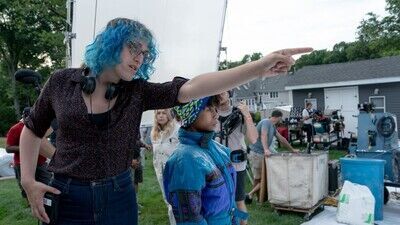While recently in Chicago to present “I Saw the TV Glow” at a sold-out screening for the Chicago Critics Film Festival, Schoenbrun spoke with RogerEbert.com about nocturnal energy, recurring dreams, and what lies within and beyond the world of the screen.
This interview has been edited and condensed.

I wanted to start out by asking you about the nocturnal realms of “I Saw the TV Glow,” which carry on from your previous feature, “We’re All Going to the World’s Fair,” and suffuse this suburban setting with a sense of ever-present dread but also lingering possibility.
I think that’s exactly right. Growing up in the suburbs, your world is very small and curated, in a lot of ways, and the spaces that you cling to, what you’re drawn to, if you’re queer, are different from the white-picket-fence, fresh-mowed-grass vibes that the suburbs are known for. You find these hidden places, and you find spaces that are imbued with magic, that from the outside can feel sinister but to you, as a kid, feel beautiful.
By 14, I was going to punk basement shows and spending as much time as I could in the video store, bumming around the streets of my town, hanging out behind Chinese restaurants, and smoking weed with my friends. It was an existence of trying to find something romantic on the margins or the dark edge of town. That’s how my gaze of what could be possible or beautiful developed.
And then, the other major influence there was media, gravitating especially—as the movie talks about—towards these kind-of-scary, kind-of-romantic TV shows that have a very nocturnal energy to them, gravitating towards the Smashing Pumpkins’ Mellon Collie and the Infinite Sadness and its aesthetics of nocturnal suburban teen angst fantasia, where the moon is both beautiful and sinister and always gazing down at you with its weird, Méliès-style gaze.
I’m a product of where I came from, but I’m also a product of this longing to escape into the night, a little bit. When I make a movie, for my own sake, I’m just trying to make something that I can be obsessed with enough to put in the years of work that are required, and so I’m trying to build landscapes, tableaus, energies, and tones that I want to live within myself.

